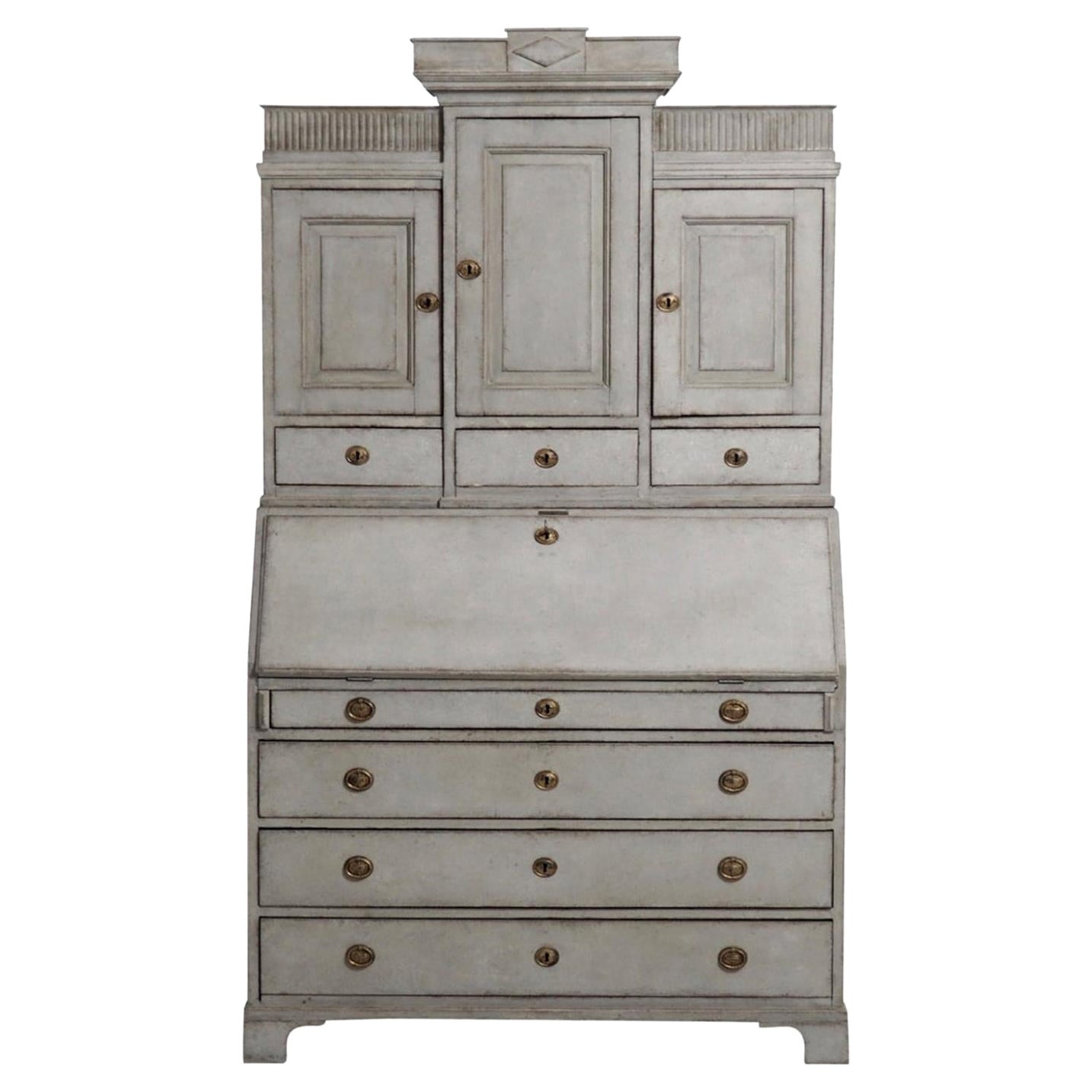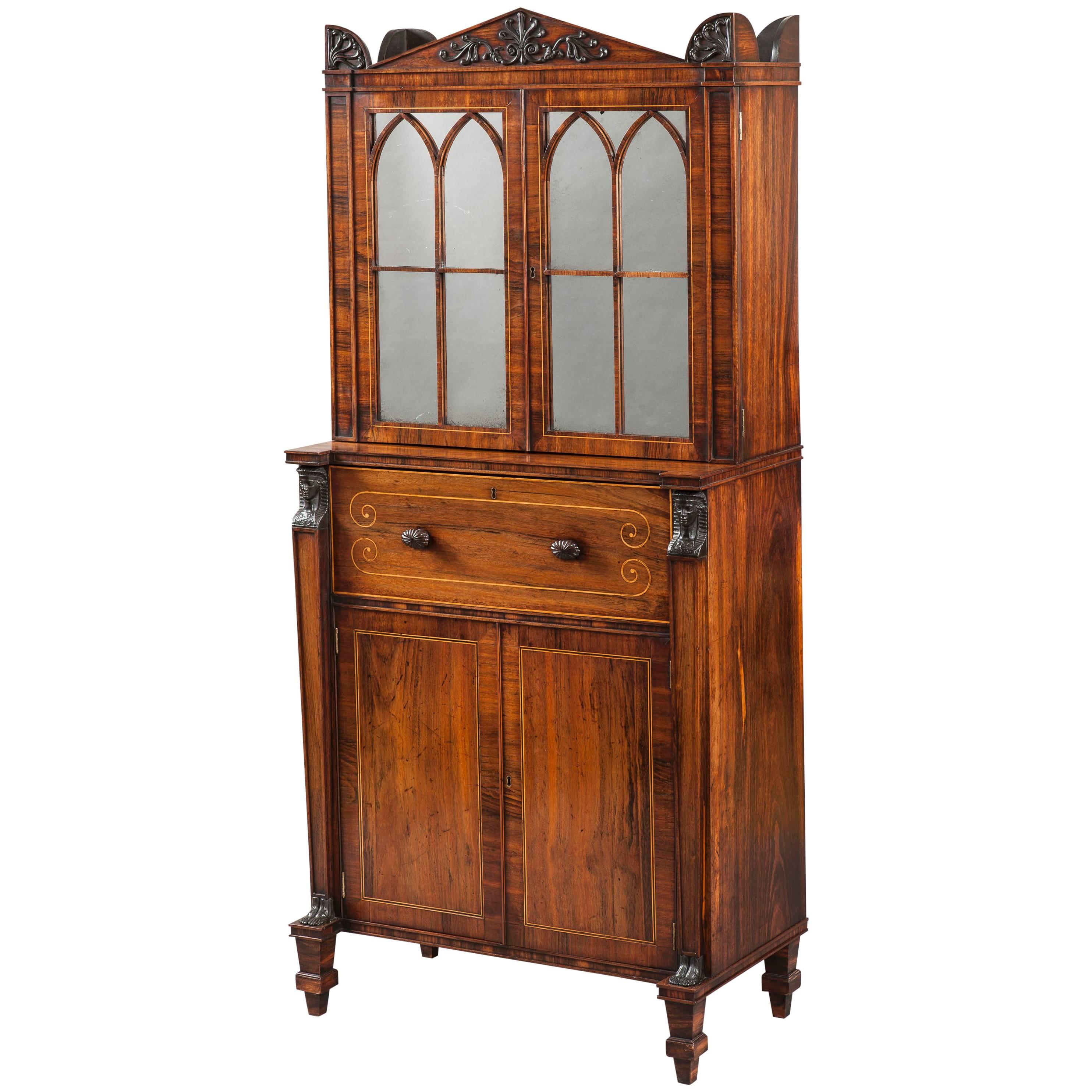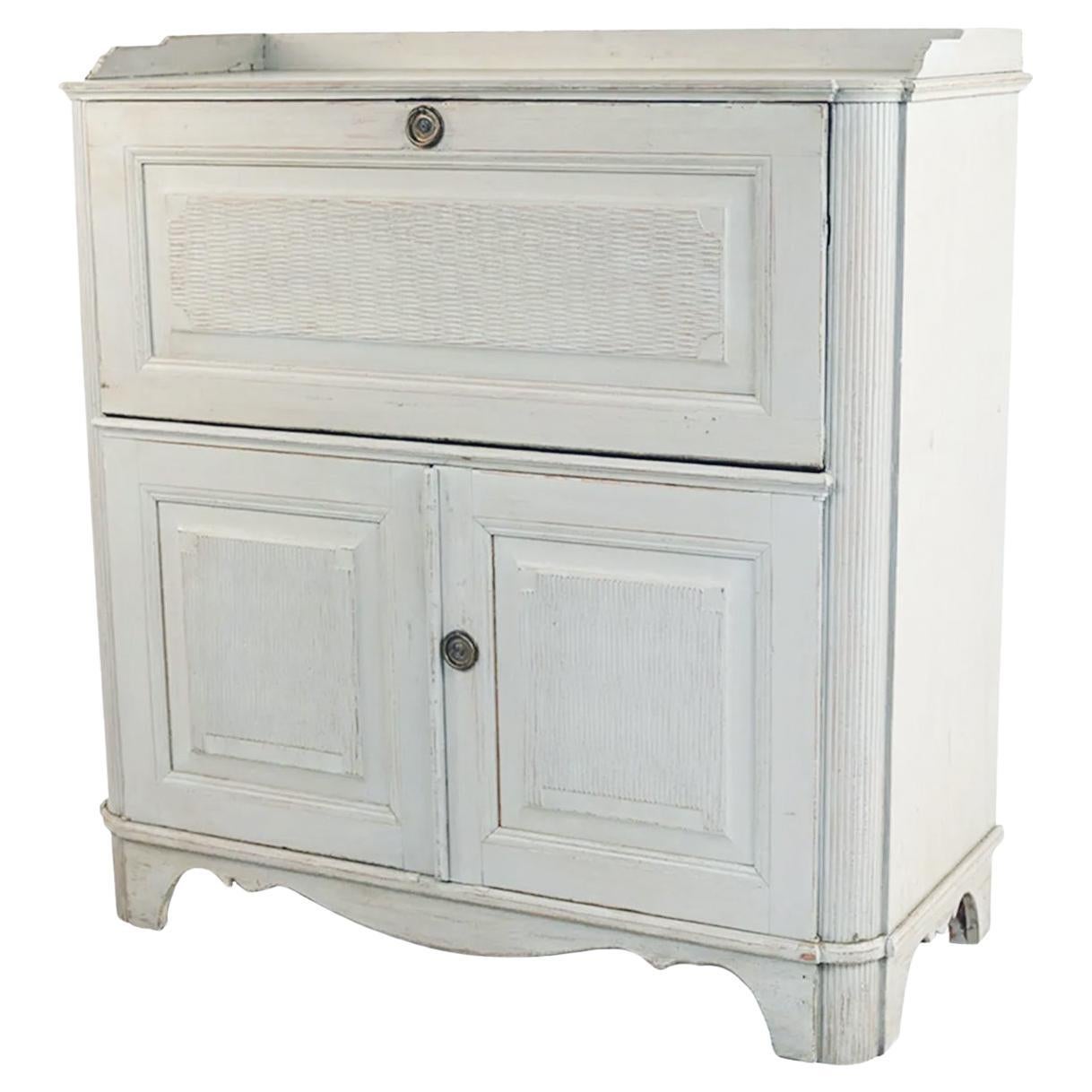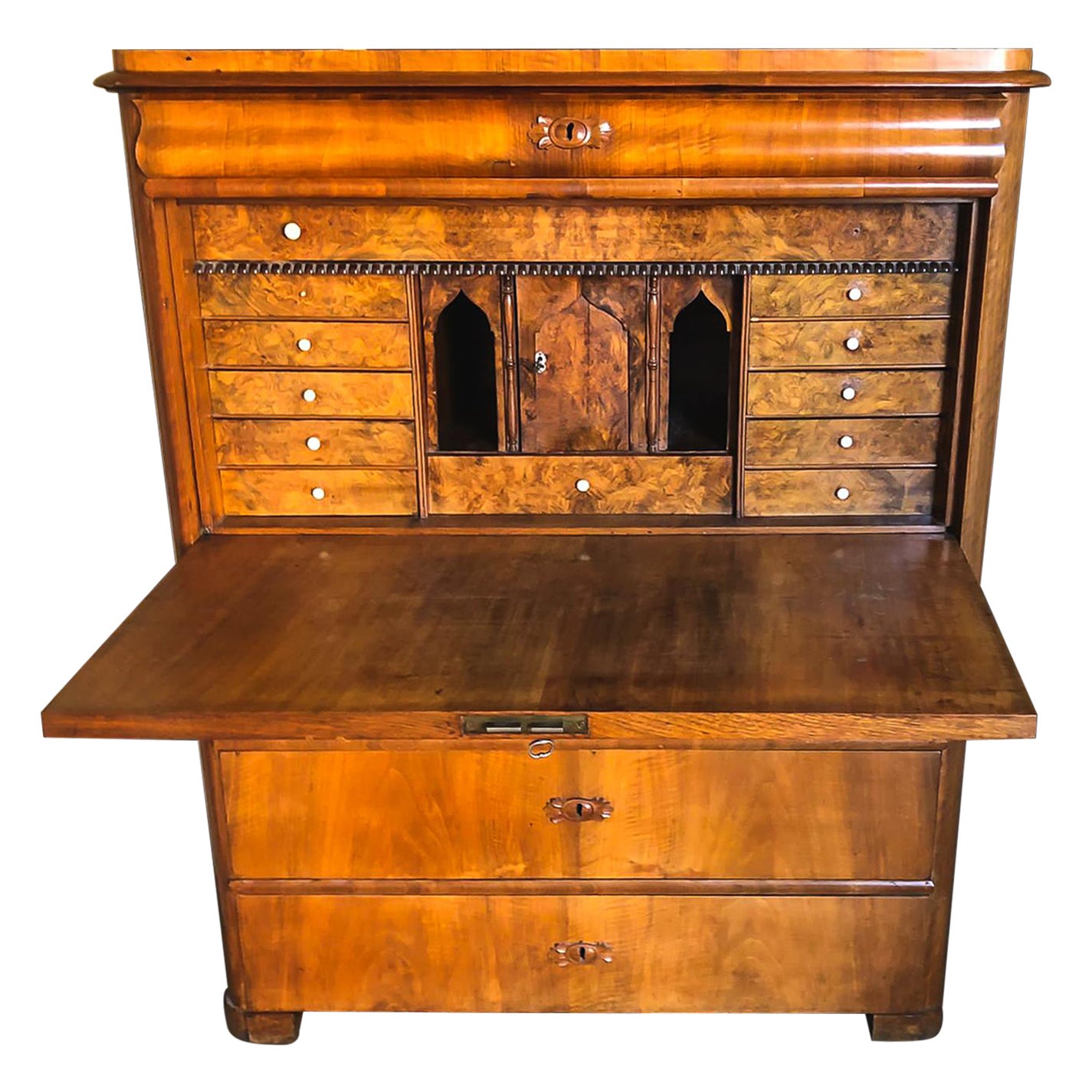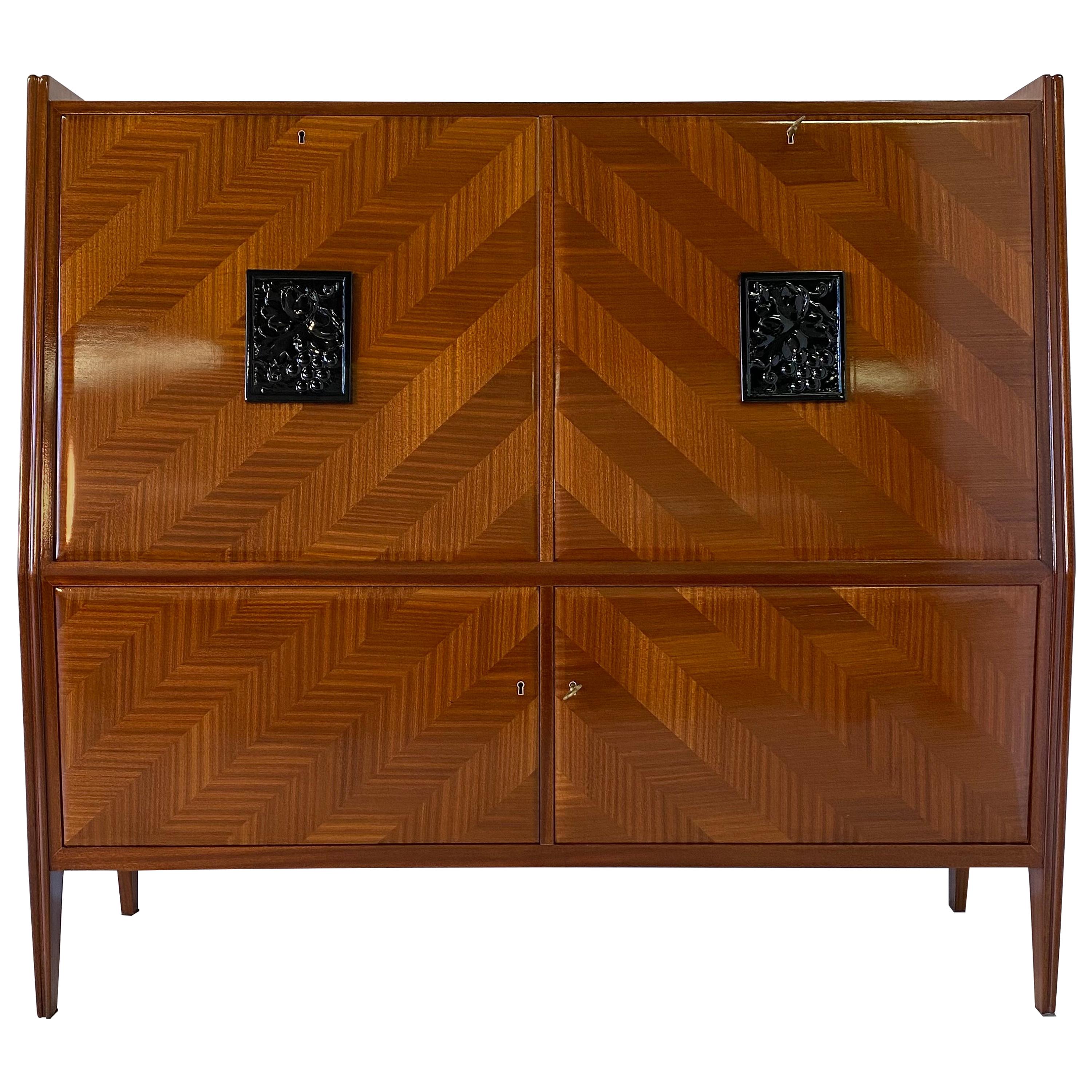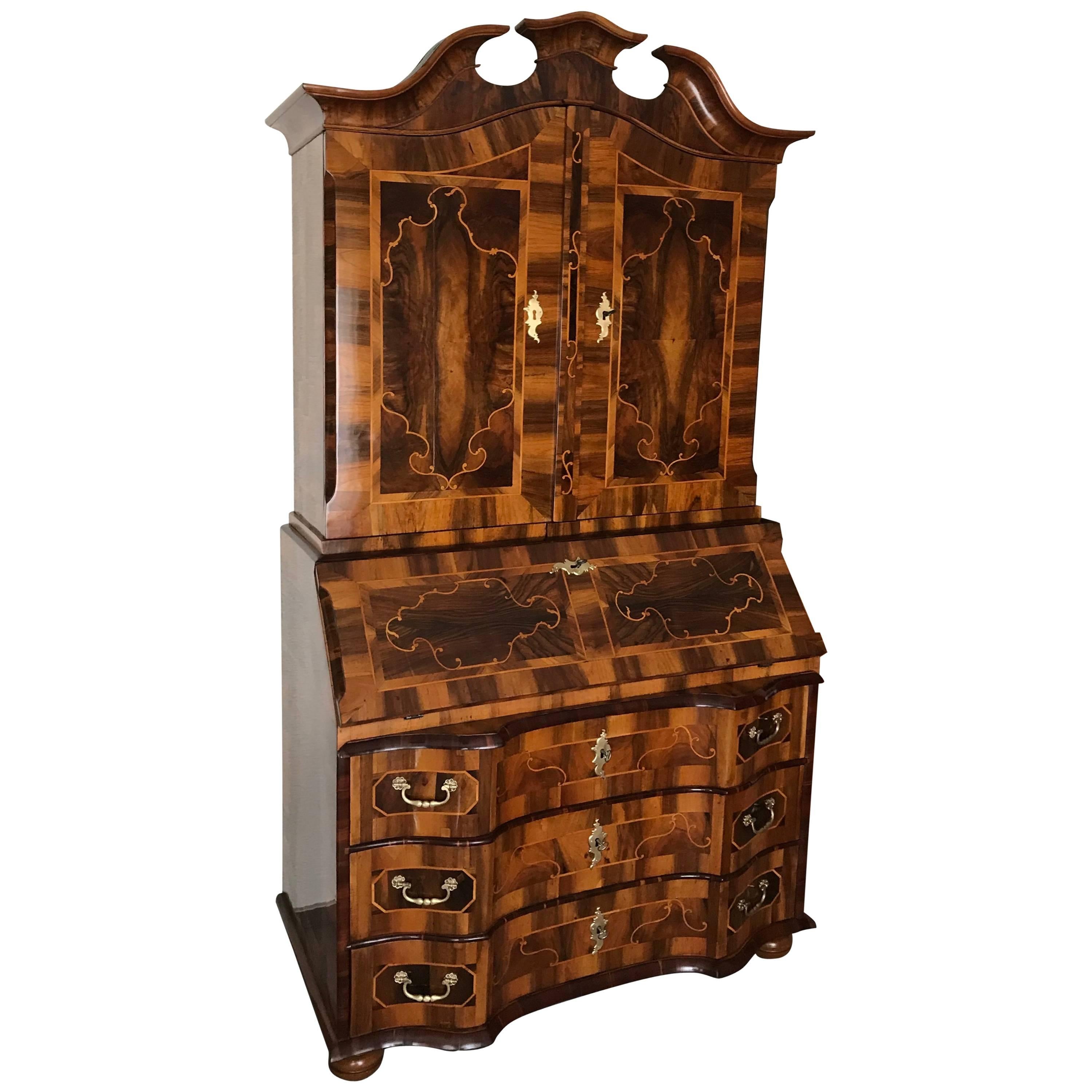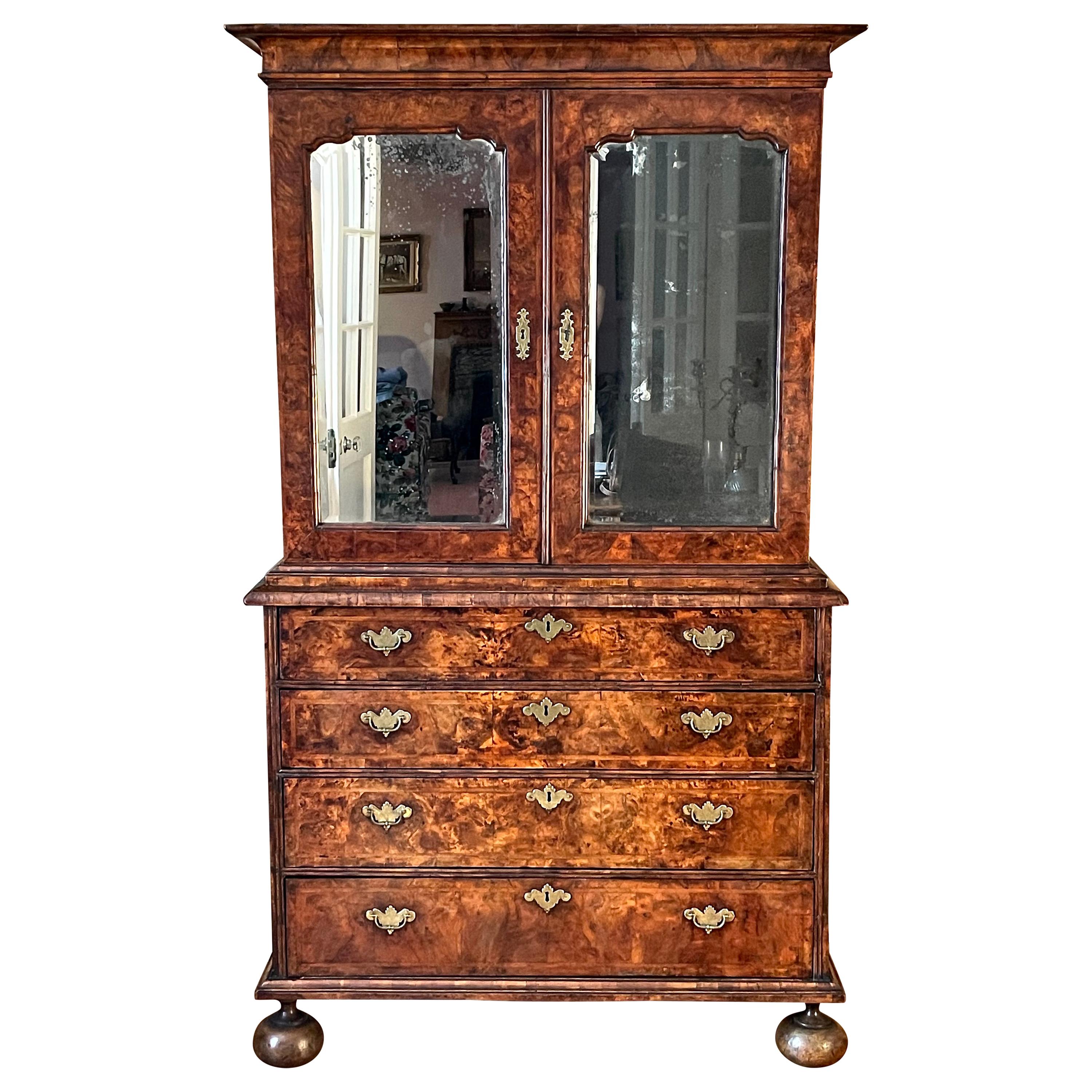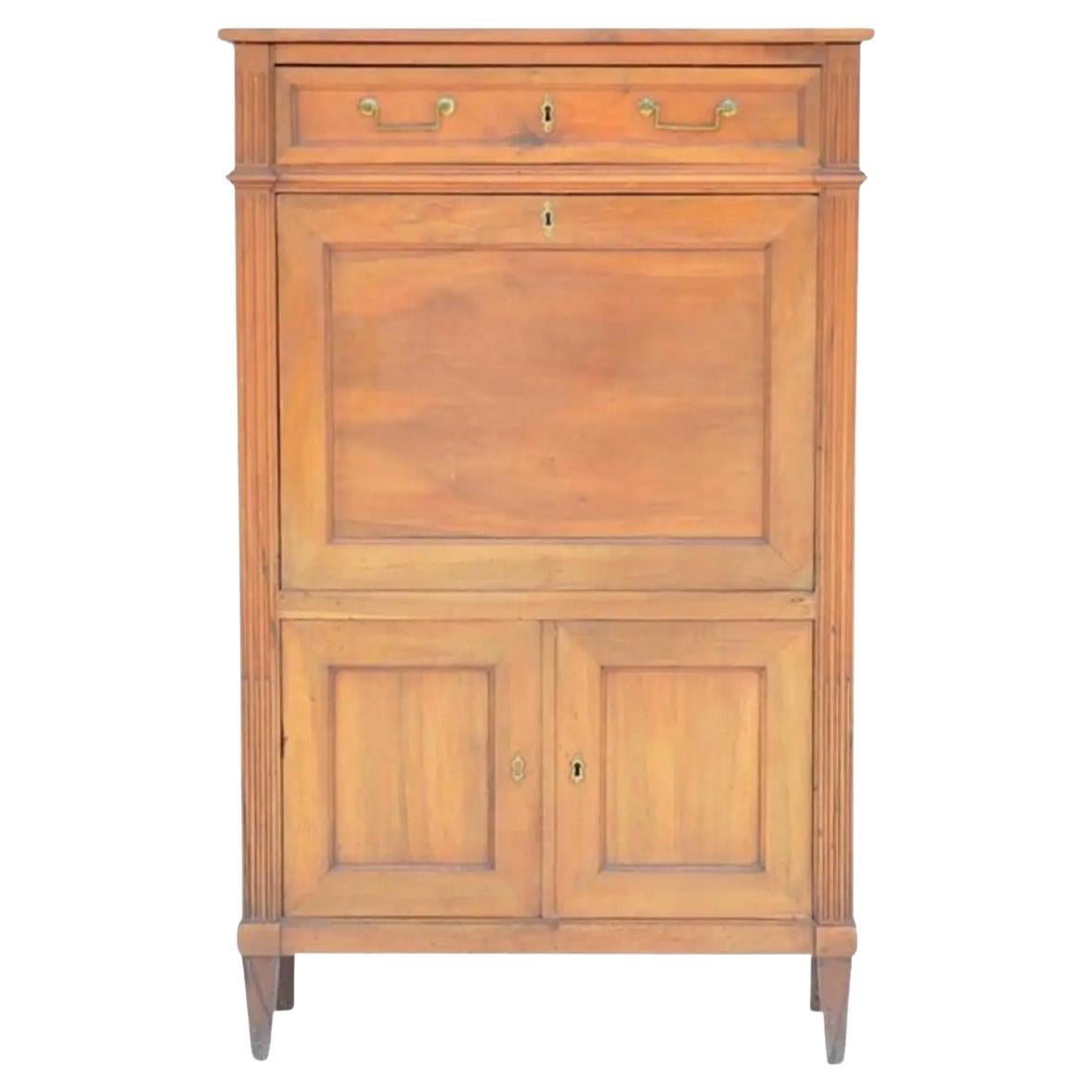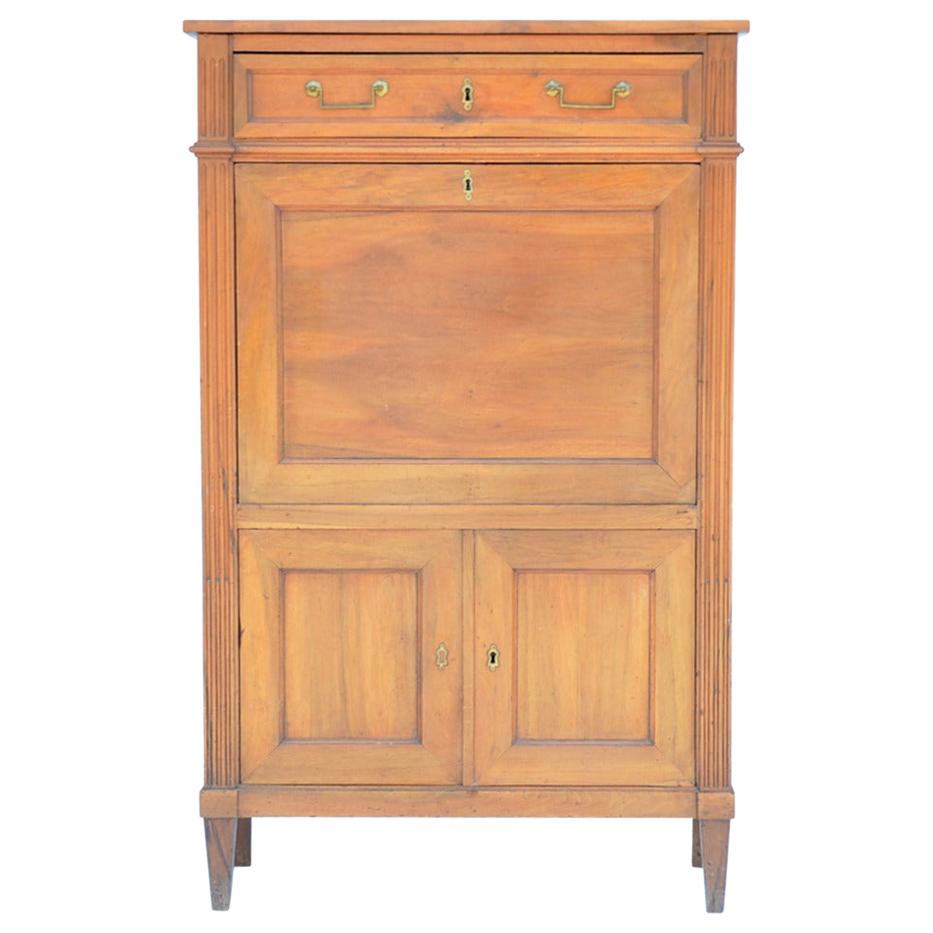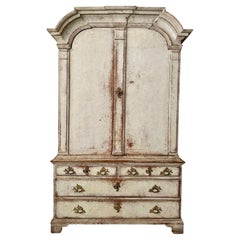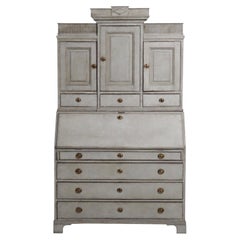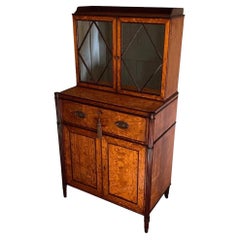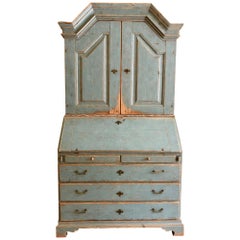
Period Gustavian Swedish Secretaire Cabinet
View Similar Items
Want more images or videos?
Request additional images or videos from the seller
1 of 13
Period Gustavian Swedish Secretaire Cabinet
About the Item
- Dimensions:Height: 81.5 in (207.01 cm)Width: 45 in (114.3 cm)Depth: 22.5 in (57.15 cm)
- Style:Gustavian (Of the Period)
- Materials and Techniques:
- Place of Origin:
- Period:
- Date of Manufacture:circa 1790-1800
- Condition:Wear consistent with age and use.
- Seller Location:Charleston, SC
- Reference Number:Seller: 46/418181stDibs: LU976416036902
About the Seller
4.9
Vetted Seller
These experienced sellers undergo a comprehensive evaluation by our team of in-house experts.
Established in 1992
1stDibs seller since 2013
367 sales on 1stDibs
Typical response time: 17 hours
More From This SellerView All
- 18th Century Swedish Baroque SecretaireLocated in Charleston, SC18th century Swedish late Baroque secretaire in original gorgeous blue/green patinated color with slant front desk with a fitted interior over the two long and two smaller drawer bas...Category
Antique Mid-18th Century Swedish Baroque Secretaires
MaterialsBronze
- 18th Century Swedish Rococo Period CabinetLocated in Charleston, SC18th century Swedish Rococo Period Cabinet in two pieces with wonderful arched cornice and original hardwares .Upper unit features three shelves in blue patina. All resting on two sm...Category
Antique Late 18th Century Swedish Rococo Cabinets
MaterialsBronze
- Swedish Gustavian Period Lindome Settee, circa 1800Located in Charleston, SCPainted Gustavian period sofa, having the signature fruit and flower carving of the hops plant used by Lindome furniture makers. Hand scraped to the most original color and seat upho...Category
Antique Early 1800s Swedish Gustavian Settees
MaterialsLinen, Pine, Paint
- Swedish Gustavian Period Bench with Antique LinenLocated in Charleston, SCVery rare. Swedish Gustavian period bench, circa 1800, finished on all three sides with Guilloché carvings on carved round fluted legs. Scraped to original cream /white finish and u...Category
Antique Early 1800s Swedish Gustavian Benches
MaterialsLinen, Wood, Paint
- 18th century Danish Period Rococo CabinetLocated in Charleston, SC18th century period Danish rococo cabinet in two parts with bonnet top, raised panel doors, three shelves, four small drawers, supported by sturdy three drawer base with beautiful o...Category
Antique Mid-18th Century Danish Rococo Cabinets
MaterialsBronze
- 19th century Swedish Corner CabinetLocated in Charleston, SC19th century Swedish Gustavian period bow front corner cabinet in one piece and with most of its original paint. Sweden circa 1860.Category
Antique 19th Century Swedish Corner Cupboards
MaterialsPine, Paint
You May Also Like
- 18th Century Swedish Gustavian Three Part Pine Bureau, Scandinavian SecretaireLocated in West Palm Beach, FLA 18th century, dark-grey antique Swedish Gustavian three part bureau, secretaire made of hand crafted painted Pinewood, in good condition. The arched upper section of the Scandinavi...Category
Antique Late 18th Century Swedish Gustavian Cabinets
MaterialsMetal, Brass
- Fine George III Period Satinwood Secretaire CabinetLocated in Lymington, GBAn exceptional English Sheraton period satinwood secretaire cabinet. Attributed to Gillows. Late-18th century, George III, ca 1790. Measures: H 59 1/2’’ (151 cm) W 30’’ (76 cm) D 19’’ (49 cm). This small, beautifully-proportioned, and sophisticated antique writing cabinet...Category
Antique Late 18th Century English George III Secretaires
MaterialsSatinwood
- English Regency Period Secrétaire Cabinet with Egyptian MotifsBy George OakleyLocated in London, GBA secrétaire cabinet of the Regency period Firmly attributed to George Oakley. Constructed in a finely faded and patinated goncalo alvez, having holly and purple heart stringing;...Category
Antique 19th Century English Regency Cabinets
MaterialsPurpleheart, Satinwood, Holly
- Antique Gustavian Secretary CabinetLocated in New York, NYAntique Gustavian drop-front secretary cabinet, hand-crafted in the early 19th Century in Sweden. It has a warm, light gray painted exterior with hi...Category
Antique Early 19th Century Swedish Gustavian Cabinets
MaterialsWood
- Biedermeier Writing Desk Chiffonier Secrétaire Cabinet Swedish Ormolu DetailLocated in LONDON, GBSwedish antique Biedermeier writing desk chiffonier secrétaire cabinet in highly quilted golden birch veneers and finished in the Classic light h...Category
Antique Late 19th Century Swedish Biedermeier Secretaires
MaterialsBirch
$3,335 Sale Price25% Off - King George I Ambassadorial Secrétaire-CabinetLocated in New Orleans, LAThis highly important secrétaire-cabinet was crafted for and specially ordered by King George I for the British Ambassador to Russia. From its craftsmanship and materials to its exceptional artistry, it is a work of royal and historic significance that exudes power in each and every detail. The broken pediment at its apex features the simplified royal coat of arms bearing the king’s crown, while the interior is adorned by portraits of the British Royal Family. Placed within the ambassador’s St. Petersburg home, this entirely unique piece of furniture would have been a potent reminder of England's grandeur and political importance. Relations between England and Russia during this period were at an all-time high. Peter the Great had traveled to England in 1698 as part of his widely known “Grand Embassy” tour, wherein he attempted to gain foreign support against the Ottoman Empire. He spent a period of nearly four months there, meeting with King William III and his court on numerous occasions. Noted academic Arthur MacGregor wrote concerning the impact of the trip, “For two decades following Peter's visit, British influence in Russia reached a peak. It manifested itself in social custom, in craft practice and in ships and naval organization... it reached a significant sector of the population before relations cooled once again and the two nations pulled back from this era of unprecedented cordiality.” First and foremost, however, it is a reminder of British might and influence. By the reign of King George I, England had come into its own as a world power. Unique in its design, this cabinet is a reflection of the country’s might. It is crafted from the highest-quality solid walnut and burr walnut adorned by gilded lock plates and engraved hinges. The presence of ormolu at its apex and lining the doors was a rarity for this period, and its addition makes manifest the importance of the design. The outer doors open to reveal multiple interiors, including fifteen separate drawers around a central cupboard; the cupboard doors each bear mezzotint portraits of George I and his father, Ernest Augustus, Elector of Hanover. An etching after the portrait of George I dating to circa 1716 is in London’s Royal Academy. A second, inner pair of doors are adorned by mezzotints of the Prince and Princess of Wales (later Queen Caroline and George II), which are both after portraits by Sir Godfrey Kneller dated 1716 in the Royal Collection. A final portrait is revealed on the very interior of the cabinet, where a mezzotint of Frederick, Anne, Amelia and Caroline, children of the Prince of Wales, resides. An etching (circa 1715-1720) after this portrait can be found in the National Portrait Gallery (London). Apart from its abundance of royal portraiture, the cabinet features stunning painted decoration, including floral designs as well as clouds, birds and trees in a bucolic motif reminiscent of Eden. Its lower portion is a study in both form and function, featuring a fitted secrétaire-drawer above three additional drawers for storage. The cabinet appears in The Shorter Dictionary of English Furniture by R. Edwards from 1964, a text that is regarded as the bible of British furniture design. Edwards describes it as a “writing cabinet...given by George I to the British Ambassador at the Russian court.” The cabinet was likely made for the 18th-century German diplomat and writer Friedrich Christian Weber, who represented English interests at the Russian court from 1714 until 1719. Although Weber’s tenure as ambassador was relatively short, while in St. Petersburg, he authored his account entitled Das veraenderte Russland (The Present State of Russia), which was published in three volumes in 1721, 1739 and 1740. It may, however, also have been made for George Douglas, 2nd Earl of Dumbarton, who served as ambassador alongside Weber in 1716. Diplomatic relations ceased between the two countries in 1721. In 1928, the cabinet appeared for sale at the International Exhibition of Antiques & Works of Art in Olympia. It had previously been in the collection of the Woltner family of Bordeaux, the celebrated vintners who owned the estate Château Laville Haut-Brion and produced wine of the same name. According to the family, Monsieur Woltner was given the cabinet as a gift from an aunt who lived in Russia for many years. After leaving the Woltner collection, the cabinet was acquired by William Berry...Category
Antique 18th Century English Georgian Secretaires
MaterialsBrass
Recently Viewed
View AllMore Ways To Browse
Fall Top Secretaire
Antique French Secretaire Desk
R Y Augousti Shagreen Secretaire
Antique Swedish Birch Cabinet
Eric Gizard Secretary
Flip Top Secretary Desk
Birds Eye Maple Empire Style
Olivewood Secretary
Primitive Plantation Desk
Scriban Art Deco
Secretaire Acajou
Secretary Abatant
Sottsass Barbarella
The Lost World Arthur Conan Doyle
Theodore Alexander Secretary
Tramp Art Secretary
Antique Country French Regence Style Secretary
Benito Fosado
